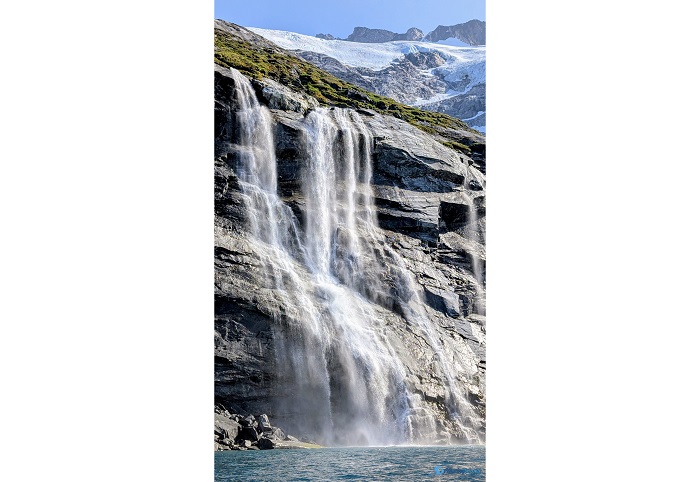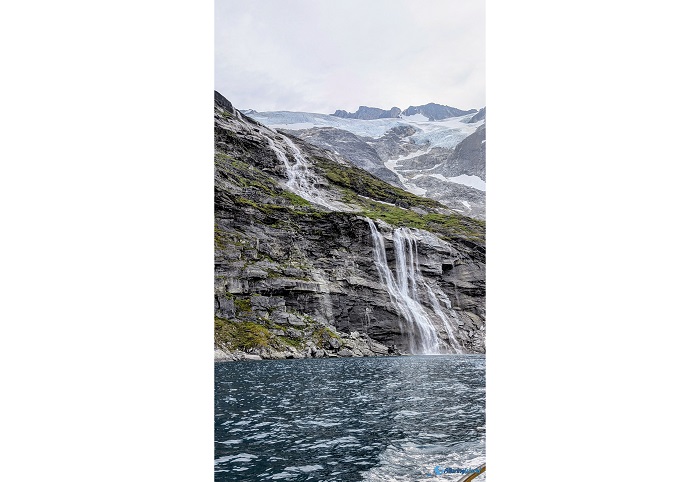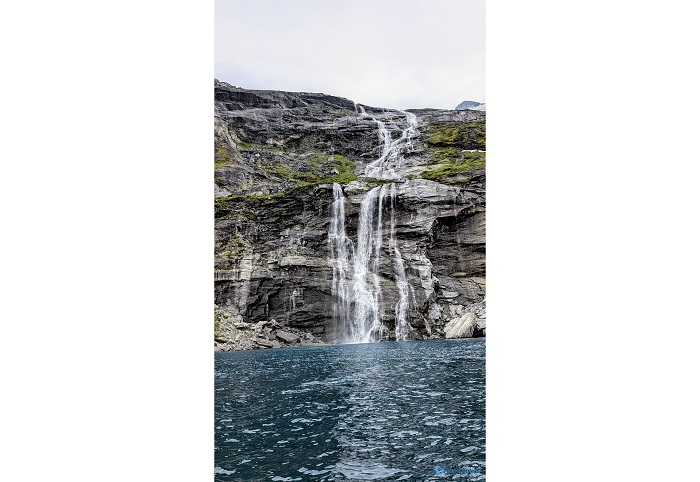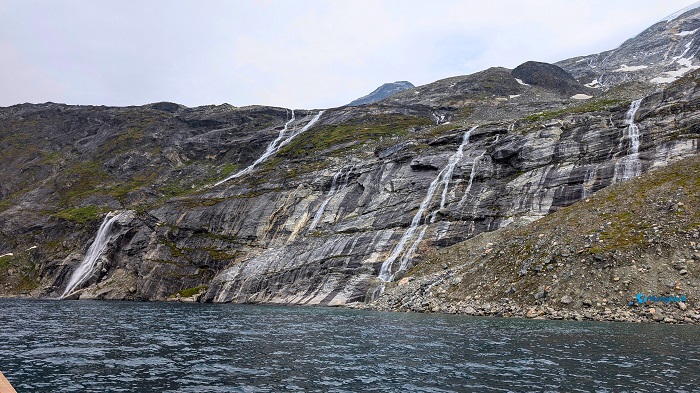Sermitsiaq Waterfall is a majestic waterfall that is located on the rugged cliffs of the Sermitsiaq Mountain in the Nuuk Fjord, off the coast of the city of Nuuk, the capital of the autonomous territory in the Kingdom of Denmark, Greenland. Being one of Greenland’s most captivating natural wonders, it combines the rugged beauty of Arctic landscapes with the serene elegance of cascading water. This waterfall takes its name from the nearby Sermitsiaq mountain, which is an imposing granite peak that has become a symbol and pride of the city and the region as a whole. Towering at 1,210 m (3,970 ft), the mountain forms a dramatic backdrop, and from its slopes and glacial meltwaters flows the waterfall that captures the attention of visitors seeking Greenland’s raw and untouched nature.
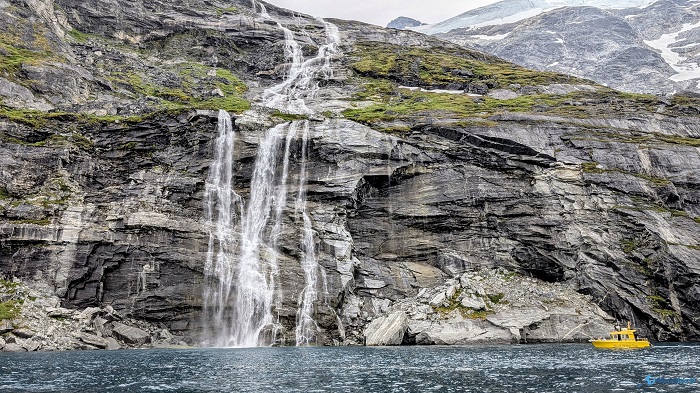
The location of Sermitsiaq Waterfall is perhaps one of its most striking features because it is situated just a few kilometers from Nuuk, accessible by boat, but it is framed by steep cliffs and towering valleys, which are shaped by glaciers, surrounded by the stark beauty of the surrounding fjord system. The waterfall itself is fed by glacial streams that originate high in the mountains, however, it needs to be noted that the waterfall’s flow changes significantly depending on the season. In the late spring and summer, when the ice and snow begin to melt at a rapid pace, the volume of water increases dramatically, producing a mighty cascade that sends mist into the crisp Arctic air. During the colder months, the waterfall slows, and parts of it may freeze, transforming it into a shimmering curtain of ice that is equally mesmerizing.
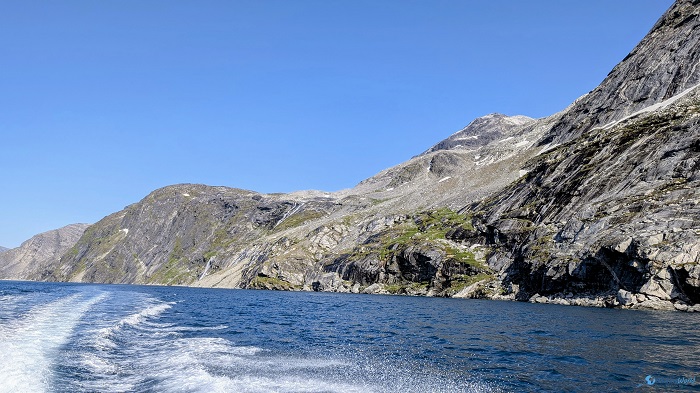
In terms of size, the waterfall is not among the largest in the world when measured purely by height or volume, yet its significance lies in its setting. Dropping over sheer granite surfaces that have been shaped by millions of years of glacial erosion, the flow of water blends seamlessly with the harsh yet majestic Greenlandic environment. The stream feeding the waterfall eventually empties into the fjords below, where fresh water meets the saltwater of the Labrador Sea. This interplay of elements gives the site an ecological importance, as it supports the delicate balance between freshwater runoff and marine ecosystems that sustain Greenland’s wildlife.
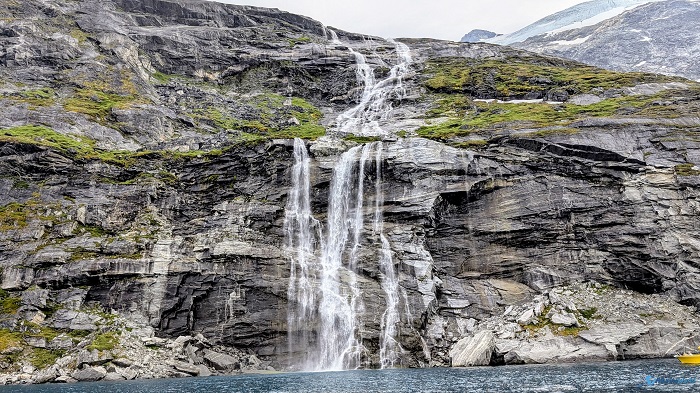
The creation of the waterfall can be traced back to the Ice Age, when massive glaciers carved the land into deep valleys and fjords. As expected, when the glaciers retreated, they left behind rugged cliffs and channels that directed meltwater into specific paths, and this over thousands of years, and the continuous and persistent flow of glacial runoff that cut into the rock, created the cascade we can see today. Greenland’s geology is dominated by some of the oldest rocks that can be found on Earth, and this provides the stage for this natural display, where the granite and gneiss formations dating back billions of years are acting as the foundation for the waterfall’s descent. The continuity of this process means that the waterfall is not static; it evolves subtly over time as water continues to shape and polish the rock face.
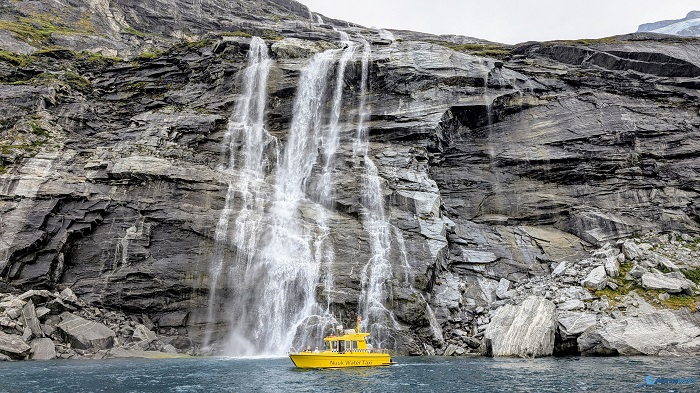
Sermitsiaq Waterfall has been known to the local Inuit population for centuries, long before the arrival of European explorers. For the Inuit communities living in the Nuuk region, the mountain and its flowing waters have always been part of their daily environment and cultural identity. Despite detailed records are abscent from ancient timesor they are quite scarce, there are some oral traditions which suggest that the mountain and its surrounding features carried deep symbolic meaning, often associated with natural spirits and the balance between humans and the environment. In Greenlandic culture, mountains, rivers, and waterfalls are not seen merely as physical features but instead they are very often seen as living parts of the landscape, embodying strength, endurance, and resilience.
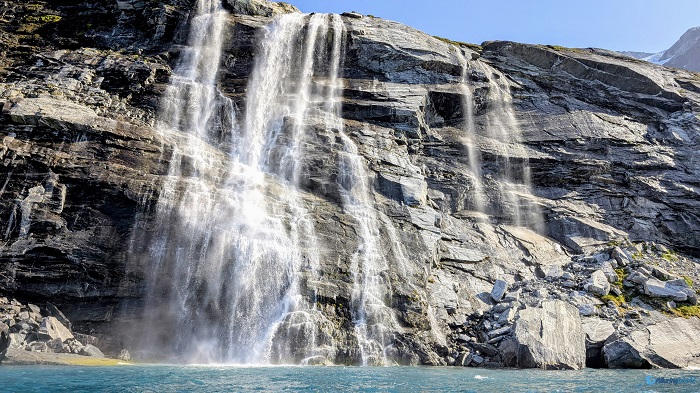
Legends connected to Sermitsiaq Mountain often extend to its waterfall. There are some local stories that speak of the mountain as a guardian watching over the city of Nuuk, while its flowing water symbolizes the mountain’s lifeblood. There are even some tales that suggest that the waterfall represents a link between the world of humans and the spirit world, with its sound carrying messages in the wind. While modern interpretations may not place the same spiritual emphasis on the site as the Greenlandic people do, still these legends continue to be shared with the young generations and told to visitors, as they add depth and cultural richness to the natural spectacle.
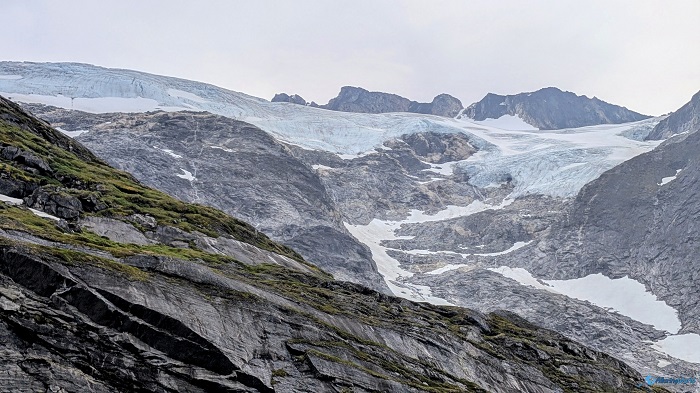
The importance of Sermitsiaq Waterfall extends beyond legend and visual appeal. The main role is in the ecological system of the Nuuk area since it influences freshwater flow and provides a habitat for mosses, lichens, and hardy Arctic plants that cling to the rocks around the cascade. The mist created by the waterfall supports microclimates that allow vegetation to thrive in otherwise harsh conditions. Additionally, the waters eventually feeding into the fjords contribute to sustaining fish populations such as Arctic char and cod, which are vital both for wildlife and for the subsistence lifestyle of many Greenlanders.
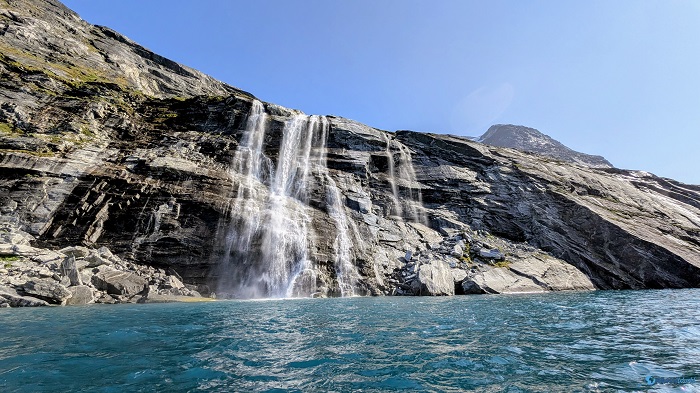
From a modern perspective, the waterfall also holds importance as part of Greenland’s natural tourism. As the country gradually receives increased numbers of annual visitors who are interested in adventure and eco-tourism, sites like Sermitsiaq Waterfall highlight the pristine beauty and untouched quality of Greenlandic landscapes. It is not overdeveloped or crowded like waterfalls in other parts of the world, offering visitors a sense of exclusivity and intimacy with nature. Many photographers, hikers, and nature enthusiasts are particularly drawn to the area, as the combination of the waterfall, the mountain, and the surrounding fjords provides endless opportunities for capturing dramatic scenes that cannot be seen in other places in the world.
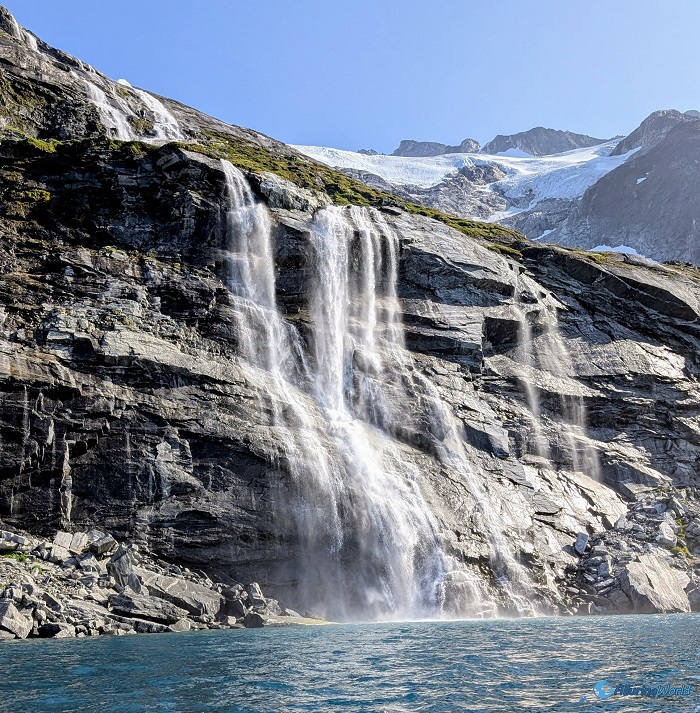
Visiting the waterfall requires some effort, but it is accessible to those willing to venture beyond Nuuk’s urban center. The most common way is by boat, as tours often navigate the waters around Sermitsiaq Mountain and approach the waterfall from the fjord, allowing for impressive views from below. Another option is to hike or take guided excursions that lead into the valleys near the base of the mountain, from which the waterfall can be approached on foot from the upper section, however, this is something that should be done with a professional tour guide and winter equipment might be mandatory depending on the period as the hike is through rugged terrain with ice and snow which is very dangerous. While not a short or simple journey, the reward is the chance to experience one of Greenland’s most authentic and unspoiled natural settings.
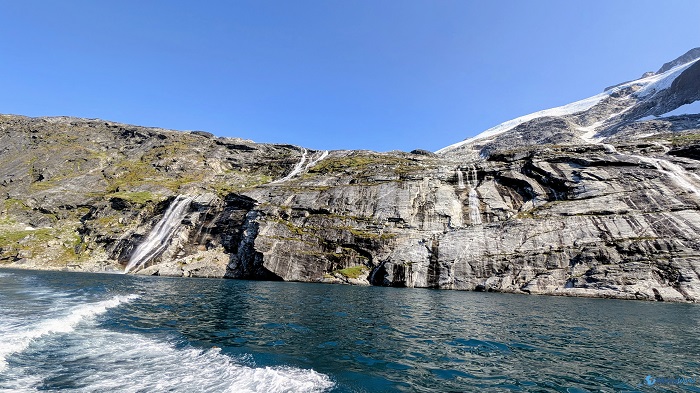
The best time to visit the waterfall depends mainly on what experience one seeks. During the summer months, from June to August, the waterfall is at its most powerful due to the melting snow and glaciers. This is also when the surrounding landscape transforms into its brief Arctic bloom, with numerous wildflowers and greenery contrasting against the gray stone and white water. Those deciding to visit it during autumn will be met with vibrant colors in the tundra, offering another striking backdrop. While access is more difficult during the wintertime, the partially frozen waterfall creates an otherworldly ice sculpture, as it appeals to adventurous travelers who are seeking something extraordinary. Overall, spring marks the transition period when the snow begins to thaw, and the renewed rush of water signals the arrival of a new season and the start of yet another waterfall’s transformation.
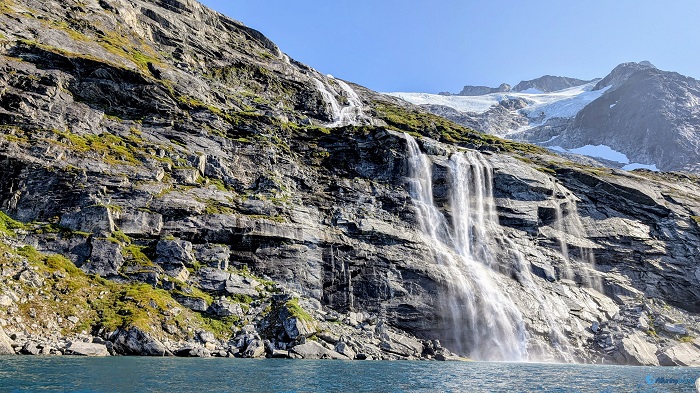
Travelers should prepare carefully when planning a trip to Sermitsiaq Waterfall. The terrain can be rugged and weather conditions unpredictable, as is common in Greenland, however, when doing a boat tour you should bring winter clothes even if it is the middle of the summer. The weather in Greenland can change in an instant, and with the tour boat rushing through the Nuuk Fjord, it is best to have your winter clothes on for better protection. Guided tours are always recommended for hikers due to the safety and for the added benefit of local knowledge, which often includes insights into cultural traditions and legends tied to the mountain and waterfall. From Nuuk, local operators offer boat tours, hiking trips, and photography excursions, making it relatively straightforward for determined visitors to include the waterfall in their itinerary.
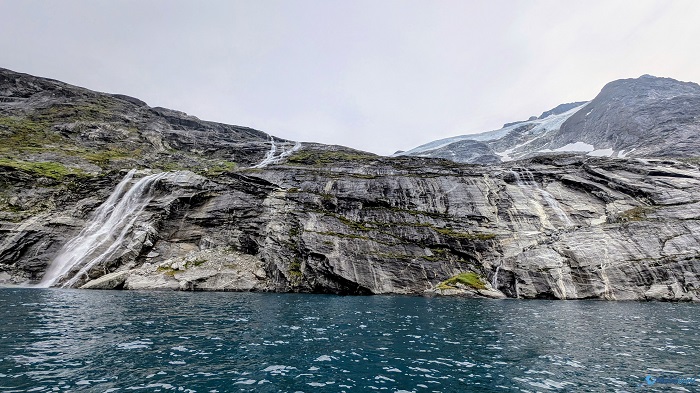
The experience of witnessing Sermitsiaq Waterfall goes beyond seeing water tumble down rock; it embodies the spirit of Greenland itself. The combination of raw natural beauty, cultural significance, and ecological importance makes it more than just a geographical feature. It is a place where history, legend, and nature converge, reminding visitors of the enduring connection between people and the landscapes they inhabit.
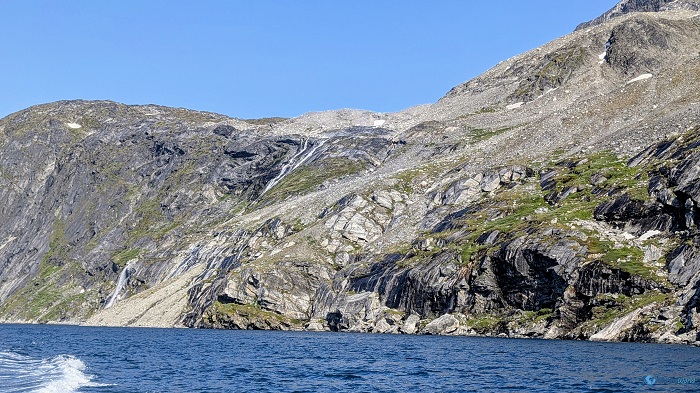
In conclusion, Sermitsiaq Waterfall stands as one of Greenland’s treasures, not because of its immense size or global fame, but because of the way it captures the essence of the Arctic environment. It has been shaped by ice and time, celebrated in local tradition, and remains vital to the ecological and cultural fabric of Nuuk. For those who make the journey, it offers an encounter with nature in its purest form, a moment of awe and reflection that lingers long after leaving. In a world where untouched landscapes are increasingly rare, Sermitsiaq Waterfall continues to flow as a testament to Greenland’s wild, resilient beauty.
